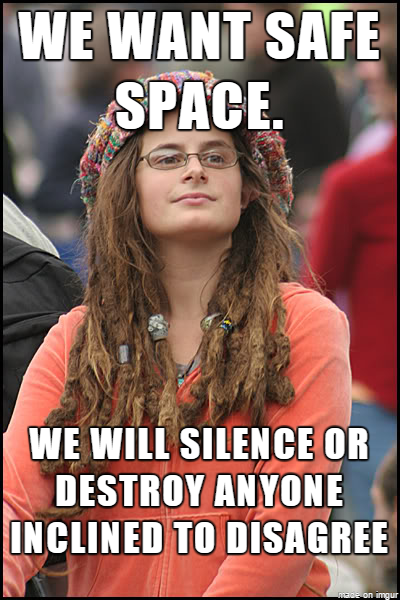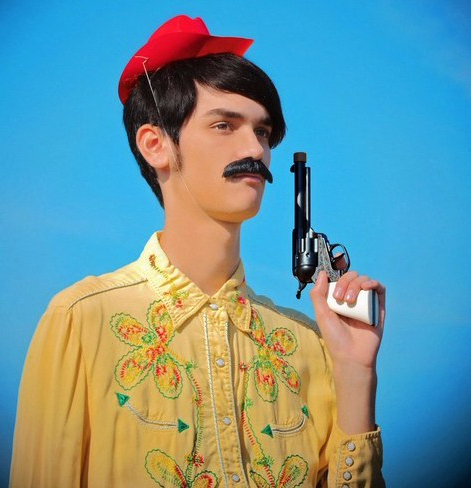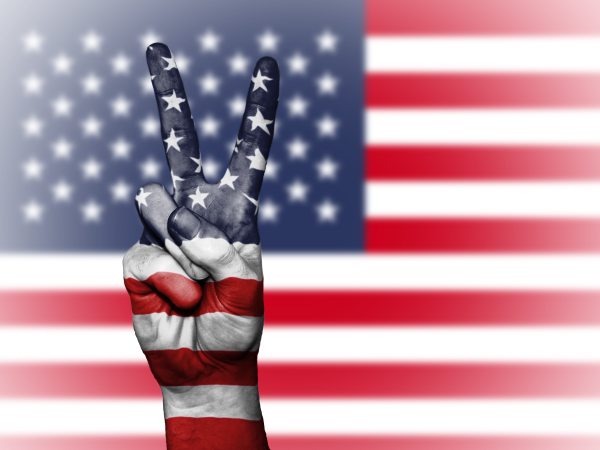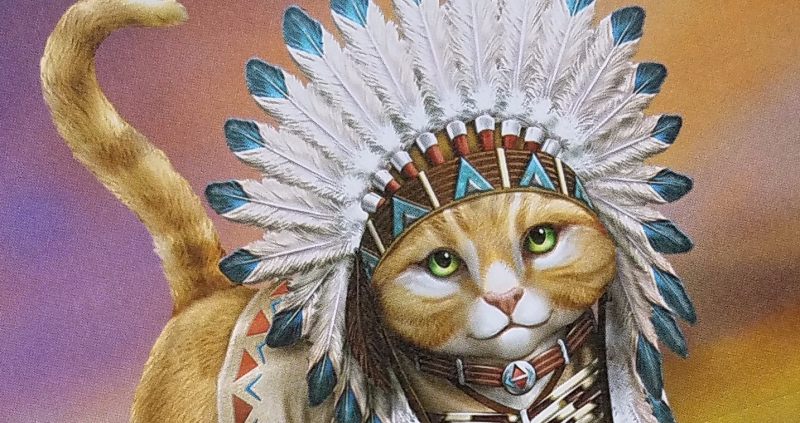Earlier this month Candid Magazine posted The Top 10 Places To Visit In America And Avoid Trump People.
First of all, has a portion of our society chosen to segregate itself into such a gooey plasma of self-imposed oppression that they can’t even vacation with their opposition?
Please. That’s awfully, “Jim Crowe” of you.
On the other hand, if it keeps me free from the forcible digestion of America’s current obsession with cultural genocide and keeps my travel plans free of riots and protests, then take Candid’s Marxist advice and run with it. I’m totally okay (or should I say ‘I give you my written consent’ so as not to violate my personal space) if you want to isolate yourself in one of these 10 bastions of Safe Space.

But, before you go, take some notes for your itinerary while you avoid the “Embarrassment-in-Chief.”
First stop? Seattle. From Fremont to the Fish Market, Seattle is a stronghold of progress; a must-see, Candid writes.
It’s also a must when it comes to knowing your criminal activity.
According to areavibes.com, the overall crime rate in Fremont is 15 percent higher than the national average. For every 100,000 people, there are 9.02 daily crimes. And while Fremont is 64 percent safer than other cities in Washington State, you could be one of the 31 lucky anti-Trumpers to score your chance at becoming a crime victim…of any crime.
Score! Who needs the Space Needle when you can go home with a gunshot wound!?
Despite a shooting in Downtown Seattle back in April 2017, James Sido, of the Downtown Seattle Association told Fox affiliate Q13, “It is safe to be in downtown Seattle, there’s no doubt about it.”
“Despite the chaos from [a recent] shooting,” the article states, “crime rates are dropping across Seattle for homicide, robbery, assault and car prowls. But in downtown Seattle, all crimes against people and property saw a spike from February into March compared to this time last year.”
Don’t worry though, downtown worker Ian Hutchinson said it’s just another day. “We don’t let something like this really affect us like feeling safe or day to day safety.”
Cool, man!
Next up, Portland, Oregon. With it’s “undercurrent of strangeness and electricity…,” Candid writes, “Don’t leave Portland without doing something strange.”
Maybe they haven’t read Willamette Week’s March 2017 story “Oregonians Are Reporting More Hate and Bias Crimes Than Anyone in U.S.”
According to the WW, Oregon—a state actually “founded as a white haven”—”now leads the nation in hate crimes.”
You were saying, guys?
The article also cites information from BuzzFeed, that Leftist sandcastle of politically correct news and information, that includes “44 incidents reported to the Documenting Hate project between November 8, 2016, and March 3 [2017].”
Additionally, BuzzFeed noted that a Freedom Rider named Ericka Mason “spotted Nazi stickers on a federal courthouse wall in Eugene during a rally to protest President Donald Trump’s executive order banning people from several Muslim-majority countries. Max Gordon, who has a mezuzah on his doorway, woke up to find a large swastika drawn in the snow on his lawn in Portland. Jeff Petrillo found white supremacy flyers stacked on a table during a school board meeting in Beaverton. Many others have seen the graffiti: swastikas in Portland; ‘We’re watching you’ on a Eugene bar with an anti-fascist sign on the door;” and “‘Anne Frank’s oven’ on a utility box less than 100 yards from a synagogue in Ashland.”
Sounds tolerant!
Next is the glistening City of Angeles, where you can get your crazy on and somebody will probably film it for free.
“Los Angeles voted overwhelmingly Democratic,” Candid notes, “so it’s a fairly safe ratio.”
I bet you can even engage in heavy petting there with prior written permission from each other, of course. This also includes full consent that the Pettee has a right to reject the Petter at any time, even after when the petting has…concluded?
And, it continues, “LA can make for an ideal sun-drenched holiday – if you know where to go.”
I hope those go-to’s aren’t in the neighborhoods discussed in the Los Angeles Daily News “L.A. crime puzzle has no easy answer” from July 2017.
Leading with “Have we reached the point where it’s cause for celebration when crime in Los Angeles rises only 1 percent?” the article quotes L.A. Police Chief Charlie Beck, who told the Los Angeles Police Commission overall crime was “‘up less than 1 percent’ compared to the same six months in 2016.”
“To most of us the key word there is ‘up,'” he said, “But Beck focused on what followed.
“Of the slight rise, he said: ‘That’s a positive after two years of incremental increases, so we think we’ve been making progress on crime in the city of Los Angeles.’
“Everyone gets Beck’s point. The overall crime uptick for January through June 2017 is an improvement over the overall crime spikes documented in the first half of 2016 (6.6 percent) and 2015 (12.7 percent).”
Subcategories, however, tell a different story and “continued to see significant increases from the first half of last year to the first half of this year. Those included auto thefts (up 5.4 percent), robberies (up 4 percent) and victims shot (up 4 percent).
“Homicides — the Mona Lisa of crime categories, the one everyone wants to see — were up 2 percent,” the article notes.

If you’re still eager to catch a glimpse of the Hollywood lifestyle, actress Naomi Grossman told Candid “pretty much anywhere in LA is good [to avoid Trump supporters].”
“Scroll through my Instagram,” she said. “Anywhere I go, or post about, has been vetted, and is void of Trumpsters. I think there may be about ten Trump supporters here [in Los Angeles], total.”
“Ten [Trump supporters] out of over four million makes for good odds indeed,” Candid concluded.
I feel safer already. Don’t you? *snuggles*
You’d better enjoy being a victim in Los Angeles though. Not to imply you aren’t already, having been subjected to free speech on top of the horrors of a democratic election.
Leaving our secessionist friends on the West Coast, Candid travelled inland to Albuquerque and Santa Fe, New Mexico where readers will find “pure magic” and a “rampant arts community.”
They can also find a rampant crime rate in Santa Fe, 69 percent higher than the national average, according to areavibes.com.
For every 100,000 people, there are 13.23 daily crimes in Santa Fe, but it’s still safer than 19 percent of the cities in the United States.
The good news is, while you enjoy that New Mexican magic you only have a 1 in 21 chance of becoming a crime victim. Oh, and the number of total year-over-year crimes in Santa Fe has increased by 4 percent. Hopefully, you aren’t in a group with 22 of your closest friends.
While you’re waiting on Santa Fe’s annual balloon rally, you might also read the Albuquerque Journal’s September 2016 article “Crime on the rise in state, Albuquerque, FBI says.
“New Mexico had the third-highest violent crime rate and second-highest property crime rate in the nation in 2015, according to new data released by the FBI…which also shows an increase in Albuquerque’s crime rates.”
Data showed there were 656.1 violent crimes per 100,000 New Mexico residents last year, “more than five times the rate of low-crime states in New England such as Maine and Vermont” and double the national average. “Violent crimes is defined as including murder, manslaughter, rape, robbery and aggravated assault.”
The Journal noted, “New Mexico was second only to Hawaii in terms of property crime….” Violent crimes rose 9.8 percent while the state’s “rate of murders and nonnegligent manslaughters…increased by 16.7 percent.” Property crimes also ranked higher than Las Vegas, Oklahoma City and Louisville.
I can just smell that desert air…as someone tries to bury my half-dead body in the sand beneath a Joshua Tree. Can’t you?

Moving on to Aspen, Colorado, what Candid referred to as a “fishbowl for people-watching” and high-end culture, you can expect to be luxuriated and “punctuated by five-star hotels and global fashion….”
If you can afford the life of a Five Star Liberal, living as a 99 Percenter among the One Percent, you’ll probably be alright considering your chances of becoming a crime victim there are 1 in 1,147.
At least you don’t have to worry about protecting yourself, because you probably won’t be able to afford it. Party on.
If Aspen isn’t your style, put on your 10-Gallon Hat, surround yourself with bulletproof glass, and mosey on down to Austin, Texas.
You’ll be wooed by the Lone Star State’s Capital of Anti-capitalism, according to Candid, by this “welcome dot of blue in the expansive sea of Republican-ness.”
While you’re there, you might be tempted to travel outside your razor-wired compound after you read U.S. News and World Report’s “Police in Austin Seek to Curb Rising Violent Crime Rate” from March 2017.
This story highlights a fun report from the Austin American-Statesmen noting “that while thousands of visitors flocked to the city for the annual South by Southwest festival…, violence around the area left about a half-dozen people dead.”
That’s because violent crime in Aspen rose last year by 10 percent, and “Austin counted more homicides than it had in years.”
“Through March 13, 187 robberies [were] reported, including four banks, 28 businesses and 155 people.

In 92 instances, the robbers carried a gun…. In nine of the robberies, the gunman fired, which police say was rare in the past.”
Assistant Police Chief Joseph Chacon said, “even with a continuing uptick in crime, Austin still ranks among the nation’s safest cities and that residents and visitors should feel safe…, though “We’ve seen some pretty high-profile incidents that have occurred that are very violent in nature.”
I’m already there. How about you? Maybe it’ll be like Buffalo Bill’s Wild West Show, only politically correct and emotionally safe.
Moving northward we have Chicago: Headquarters of Hope and Change—and the nation’s highest crime rate.
The folks at Candid want you to know this city is home to Barack Obama, “the man the world wishes was still in America’s top job,” they say, because “Chicago is one hell of a city.”
They failed to mention you might think you’re in hell while you’re there “especially in the summer.”
I know you’ve already booked your hotel on the Magnificent Mile, but just hang on. Take a look at the Washington Times’ article, “Chicago still leads nation in homicides; violent crime on rise in other big cities.”
Need I really say more? It’s okay. I will anyway.
This story, from August 2017, notes “Violent crime is on the rise this year in some of the country’s biggest cities…,” but The Windy City holds a special place in a hardened criminal’s heart.
“Chicago still leads as the deadliest city while homicide cases have spiked in Baltimore and New Orleans,” the Times states.
“The 62 police departments that provided data for the Major Cities Chiefs Association’s midyear crime survey reported 3,081 homicides in the first six months of the year, an increase of 3 percent over the same time last year.
“The departments recorded nearly 4,000 more aggravated assaults this year than at the same period in 2016, though reports of other violent crime — including rape, robbery and nonfatal shootings — remained about even.”
I mean, I’m already there. Let’s go! It’ll be like Mario Kart with semi-automatic machine guns.
Next stop, Asheville, North Carolina! That scenic hotspot and island of Socialism in the middle of the Smoky Mountains.
In Asheville you’ll not only get the munchies, but according to the Asheville Citizen-Times you might even get mugged, if you’re lucky.

In their February 2017 article, “Downtown Asheville leads city in crime,” C-T doesn’t hide facts that “the city’s top spot for serious crime also happens to include its poshest real estate—the half-square-mile where thousands of well-heeled tourists drink craft beer and eat at high-end restaurants,” where “Downtown saw more acts of violence and other serious crimes in 2016 than in the city’s four other crime hot spots combined.”
“Downtown was the hot spot in all areas with 351 total serious crimes—57 violent and 294 property.”
One of only nine murders, according to the article, in this city of approximately 80,000 “happened next to [downtown] when real estate agent Christina Kessinger was found in a dumpster in a business parking lot just north of I-240.”
Well, as long as they’re environmentally conscious criminals, I guess the Anti-Trump populace should feel safe enough to head downtown for some hemp necklaces and a vegan chicken sandwich.
Next on the list, how could a Never-Trumper forget The Big Apple!? It’s New York City, baby!
“Trump may have his own tower on Fifth Avenue, but the people of NYC collectively said ‘not my president’ on the 8th of November 2016,” Candid proclaims. “Needless to say, avoid Fifth Avenue. Instead, go anywhere….”
Anywhere, except maybe the outskirts of town, where murders “grew 10.5 percent between 2015 and 2016 — from 266 to 294 — while murders fell in New York City by nearly 5 percent, from 352 to 335,” according to a July 2017 article in the Poughkeepsie Journal titled “Crime in NY hits all-time low, but murders outside NYC up.”
Your chances of getting mugged or murdered while you’re checking out the bright lights of Broadway might be on the downslide, but best wishes for a speedy recovery while getting there.
In April 2017, the New York Daily News found while “murders were down 10%, with 61 slayings this year compared to 68 last year, police said, “…crime in the subways is up 6%, mostly due to a double-digit surge in felony assaults.”
That’s not NYC’s fault though, according to officials. Blame it on Trump’s proposed budget cuts that would leave America’s largest city defenseless in its fight against terror, according to Police Commissioner James O’Neill and Leftist Mayor Bill de Blasio, who vowed to fight any cuts while publicly funding anti-Semite Linda Sarsour with taxpayer dollars. (Read that story here.)
Last but not least, we have a bastion of anti-Trump Socialism Burlington, Vermont.
“…Home to the antithesis of Donald Trump in every way: Bernie Sanders – state senator and former contender for the Democratic nomination,” Candid notes, Burlington’s a “vibrant university town” fit for foodies and art enthusiasts.
Burlington’s also a great place to get robbed. Wonder if that has any support to do with Bernie’s campaign platform, since his electorate believes in forced benevolence?

Per the Burlington Free Press in November 2016’s “Drugs behind rise in robberies,” the number of robberies in Burlington “increased over recent years, despite Vermont ranking as the safest state in the country.”
Despite large quantities of pancakes and maple syrup, robberies in Vermont “are up by 40 percent, according to a Tweet sent out by the Burlington Police Department.
“In Burlington, 911 calls regarding robberies rose from 22 in 2014 to 38 in 2015, according to data posted by the department. So far [as of the end of 2016], there have been 22 robberies reported….”
While “Vermont is the safest state in the country according to an analysis of FBI data by 24/7 Wall Street. The analysis found the state’s violent crime rate to be 118 incidents per 100,000 residents.
“Burlington Police Chief Brandon del Pozo attributed the rise to heroin use and the opiate crisis,” the Free Press writes. “Many of the robberies are drug-related, either an addict seeking money for drugs or robbing a pharmacy to get access to drugs.”
Sounds awesome. Right? Nothing like having your Ben & Jerry’s and being mugged for the spoon, so a thug can warm their opioids.
I know you’ve already got your bags packed for one of these safe havens, but “if in doubt,” Candid writes, you can always “head north to Canada or south to Mexico” as “‘the wall’ is not up yet.”















